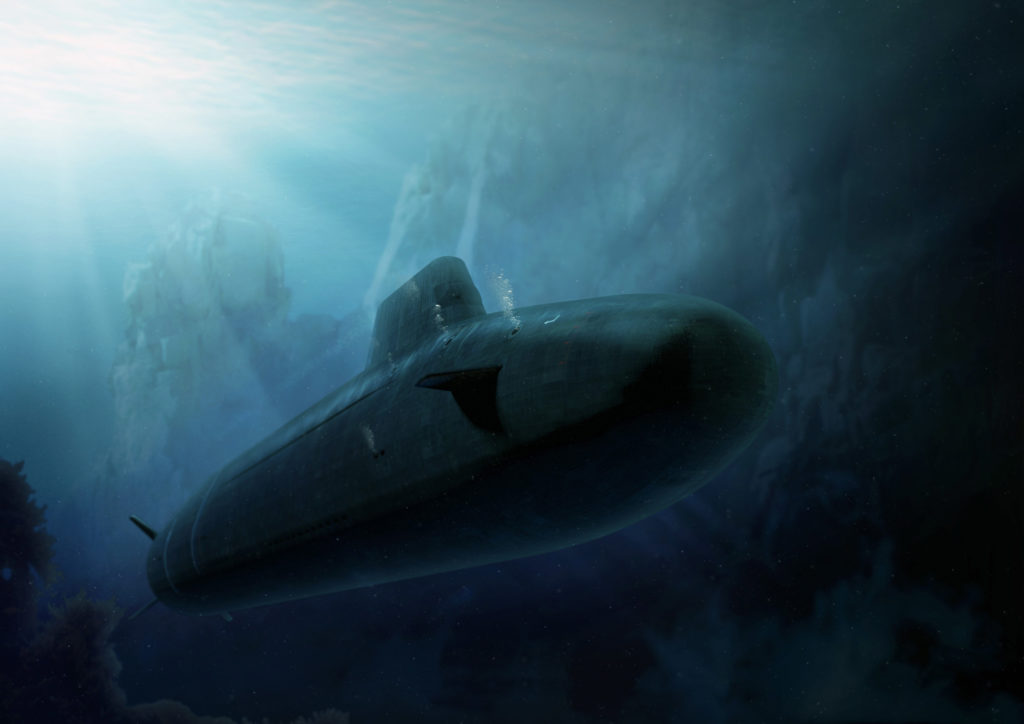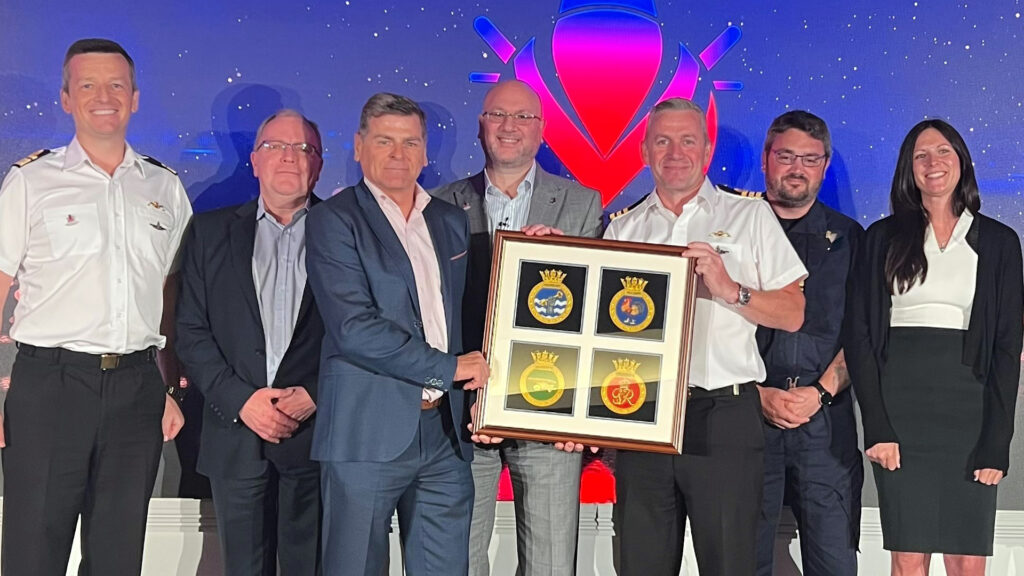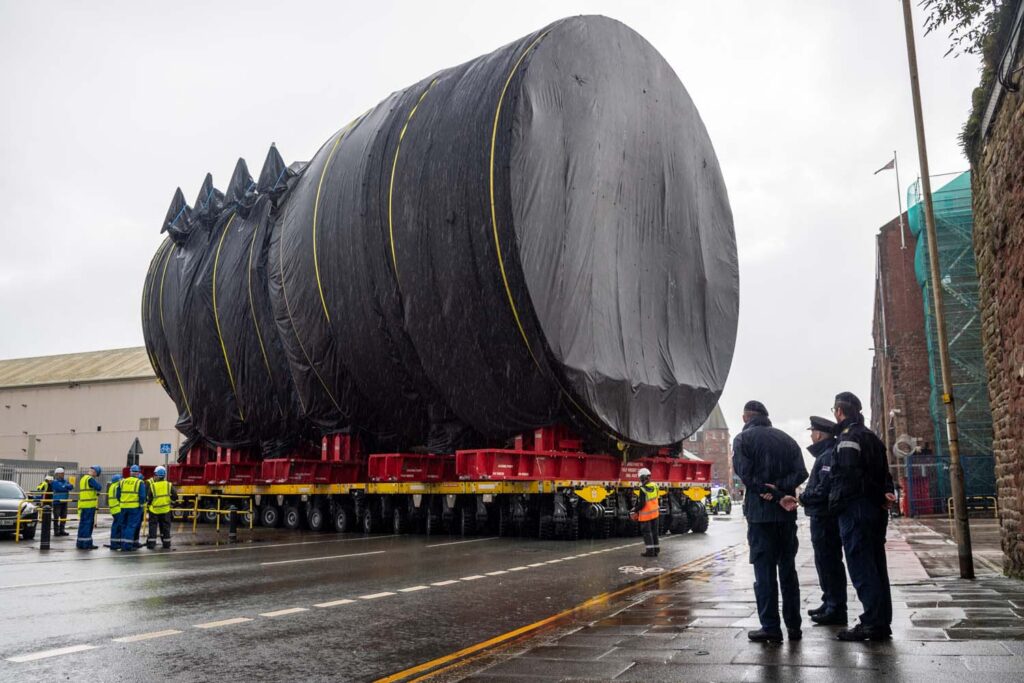
In February 2023, a significant milestone was marked in the build programme for the Dreadnought ballistic missile submarine programme.
The Dreadnought Alliance celebrated cutting steel on Warspite, the third of four new Dreadnought Class submarines, currently in build at BAE Systems’ Barrow-in-Furness site.
Supporting tens of thousands of jobs across the UK, with 13,500 in the north-west of England specifically, this manufacturing milestone marks significant progress in one of the most complex engineering projects ever undertaken in the UK.
BAE Systems Submarines currently employs 1,767 apprentices and 332 graduates and undergraduates, most of whom are based at its site in Barrow, Cumbria. The Submarines Academy for Skills and Knowledge is training the next generation who will design and build the UK’s submarine capability, including the Dreadnought Class.

Commemoration and collaboration
April marked the 5th anniversary of the Dreadnought Alliance, alongside the 60th anniversary of the Polaris Sales Agreement.
All of the Alliance partners are working diligently on the significant scope of the programme's Delivery Phase 3; to help achieve the shared ambition to deliver the first Dreadnought boat to the Royal Navy – ready for service in the early 2030s.
Alex McMillan, Dreadnought Alliance Managing Director, said: "This is a fantastic achievement because it reinforces that the Alliance was, is and will remain the only way to meet our shared Vision, Mission and Ambition.
"It gives me huge pride to be part of such a strategically important programme and I have been amazed by the knowledge and effort that each and every one of our colleagues brings to the task. I am also acutely aware of the frequent sacrifices they make. I have been witness to many great examples of achievement by so many dedicated people."

Signed on the 6 April 1963 by UK Prime Minister Harold Macmillan and US President John F Kennedy, the Polaris Sales Agreement (PSA) enabled the UK to buy the Polaris strategic weapons system from the USA – this was later updated to Trident in 1982. The PSA remains one of the most important intergovernmental agreements in the history of the two nations.
This commitment has enabled the UK to maintain its Continuous At Sea Deterrent (CASD) since 1969. It guarantees safety for the UK, NATO allies and the US by deterring the most extreme threats to our way of life.
The Polaris Sale Agreement not only maintains CASD, but it’s also helped achieve amazing innovations in technology and science, which is key for the future submarine workforce. Designing, building, maintaining and operating the deterrent directly supports tens of thousands of jobs and brings investment to communities across the UK. The future holds even greater promises in technological advances, enabling both the UK and US to maintain deterrence.
The Dreadnought Alliance is proud to be playing its part in this truly incredible national endeavour.
Bringing suppliers on board the mission
In June, a supplier conference helped over 120 suppliers from across the UK to strengthen their bonds with the Dreadnought Programme – with the shared priority to deliver the first Dreadnought boat in the early 2030s.
Speaking at the Supply Chain Conference, Sir Peter Gershon, Independent Chairman of the Dreadnought Alliance, said: "Nothing is more important to the Programme than delivering the Dreadnought Class to the Royal Navy on time, ready for patrol. There is no doubt that the time to act is now. It is time to step up and play our part in this country's history."
Rear Admiral Donald Doull, the Royal Navy's Senior Responsible Owner for the Dreadnought Programme, said: "The mission that we charge our submarine service with is fundamental to our safety and security as a country – all of us; me, you, your friends, your family. We need them to be successful.
"We owe it to every single submariner to give them every advantage to ensure they are able to deliver their mission safely and securely. We can and we will do this. That will be our legacy."
The event was also an opportunity to celebrate the successes of suppliers with the first Dreadnought Alliance Supply Chain Awards.

Reflections from a Submariner on his CASD experiences
In August, the Dreadnought Alliance shared the reflections of a submariner about his experiences, as part of its commitment to supporting the Royal Navy's delivery of the Continuous At Sea Deterrent. The insight and understanding of such submariners is integral to delivering the Dreadnought Programme.
Jonny, who served on a Vanguard Class submarine, said: "It's an immensely proud experience. I still find myself welling up with pride when I talk about or reflect upon my career. I have to remind myself that very few people in the world have ever done what I have.
"Our nation has delivered CASD since 1969. We always have a submarine on patrol protecting our interests and providing the ultimate safeguard.
"That I played my own part, however small, in that will always stay with me, and nothing can take that away. It's easy to forget that CASD isn't just an operation, it isn't just lumps of steel; it is people, with very real stories and very real lives."
Connecting more people with the project
In September, the Dreadnought Alliance reached more than 10,000 followers on its LinkedIn feed. This helps to communicate the Dreadnought Programme to the public, as well as engage with more people and encourage them to join the team working on this truly national endeavour.
The LinkedIn audience spans key employment sectors including defence and space manufacturing, aviation and aerospace components, shipbuilding, engineering, project management and business development. The feed has achieved nearly 1 million unique impressions and over 114,000 engagements with posts; including people sharing content such as this post about Lieutenant Ami Burns – one of the first three female Marine Engineers to go through the Submarine Service’s training programme in the UK.

A moving experience
Another giant leap forward came in October with a major move of the largest segment or ‘mega unit’ of HMS Dreadnought to be completed so far.
It’s the longest section of a submarine moved through the streets of Barrow-in-Furness from BAE Systems’ fabrication facility to the cavernous Devonshire Dock Hall (DDH), originally home to its predecessor, the Vanguard Class. The DDH has dominated the skyline of the Cumbrian town for decades.
At over 20m, it is the longest submarine unit to move by road since the fore-end mega-unit moved to the DDH for the final Vanguard boat in the mid-1990s.
All four Dreadnought Class submarines will be assembled under cover in the dock hall – 260 metres long, 58 metres wide and 51 metres high, making it almost large enough to accommodate the Titanic.
Dreadnought is due to enter service in the early 2030s while the Vanguard Class boats begin retiring after four decades carrying out Operation Relentless, the UK’s strategic deterrence mission.

The challenge of a generation
The Dreadnought Class will be one of the most complex machines ever built and it will operate in one of the most hostile environments on the planet.
As the largest Class of submarine ever built for the Royal Navy, each will boast 26.4 miles of pipework and more than 20,000 cables stretching 215 miles – further than traveling between London and Leeds.
The four Dreadnought Class submarines, each the length of three Olympic swimming pools, will maintain the Continuous at Sea Deterrent (CASD), responsible for safeguarding our national security and way of life, for as long as the international security situation makes it necessary. The Dreadnought Programme is a truly incredible national endeavour.